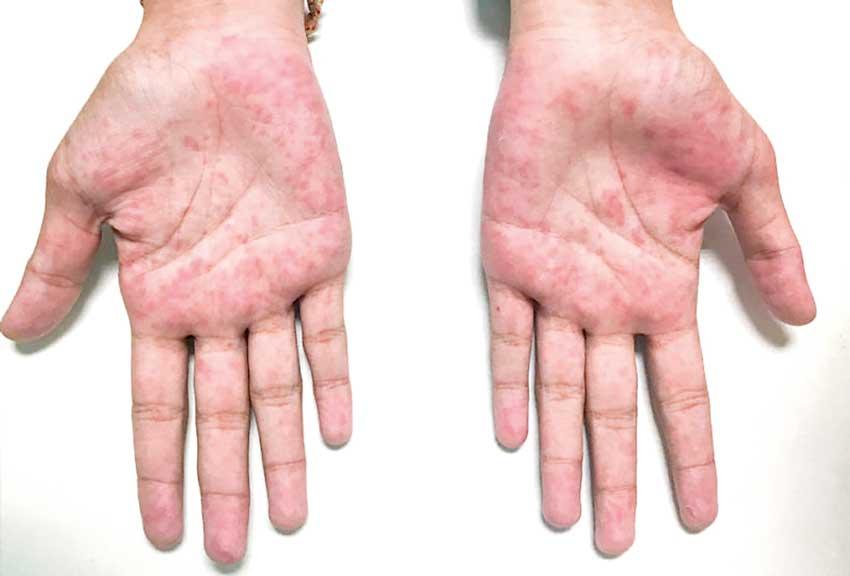22 May 2020 - {{hitsCtrl.values.hits}}

 With the outbreak of the Corona pandemic, the disease has garnered much attention owing to its possible link to a strange mysterious inflammatory syndrome affecting young children lately, very similar to the Kawasaki disease. Hence, today’s Health Capsule will focus on what Kawasaki disease is and how it affects the health of young children. Explaining the various intricacies of the disease, Consultant Paediatrician at the Lady Ridgeway Hospital for Children Dr. Deepal Perera says that more than 10-15 patients with Kawasaki are reported to the Lady Ridgeway Hospital every year.
With the outbreak of the Corona pandemic, the disease has garnered much attention owing to its possible link to a strange mysterious inflammatory syndrome affecting young children lately, very similar to the Kawasaki disease. Hence, today’s Health Capsule will focus on what Kawasaki disease is and how it affects the health of young children. Explaining the various intricacies of the disease, Consultant Paediatrician at the Lady Ridgeway Hospital for Children Dr. Deepal Perera says that more than 10-15 patients with Kawasaki are reported to the Lady Ridgeway Hospital every year.
What is Kawasaki disease?
Kawasaki is an auto immune disease without a known cause, generally followed by a viral disease/ diseases. According to Dr. Perera, it is a vasculitis condition where the blood vessels get inflamed throughout the body. Though the cause is unknown, the Kawasaki disease may occur following an infection triggering an auto immune response in the patient. It is a non infectious disease.
The disorder was first identified by Tomisaku Kawasaki in 1967 in Japan. Kawasaki is the most diagnosed pediatric vasculitis in the world, which affects more boys than girls particularly with Asian ethnicity; mostly people with Japanese and Korean ethnicity. “Studies indicate that 80 percent of patients reported with Kawasaki disease in the world are children below 5 years of age. The topic is widely discussed following the outbreak of the Corona virus epidemic though Kawasaki does not occur directly due to the coronavirus. However, due to the recent pandemic there is a tendency to witness more cases presenting with the disease” says Dr. Perera.

Symptoms and Diagnosis
“We do not have definitive diagnostic tests for Kawasaki, but we do have certain clinical features based on which we could diagnose the disease. Fever that continues for more than five days and does not subside with Paracetamol, presence of cervical lymph nodes, non purulent conjunctivitis and strawberry tongue are some symptoms of the disease. Some children with Kawasaki disease have presented with a redness around the scar left by the BCG vaccine. After 2-3 weeks, patients are presented with symptoms such as the peeling of the skin in the palms and soles. Skin rash is another symptom of the disease. The vulnerable age group is below five years” he added.
One of the most important feature is coronary aneurysm or coronary heart disease following Kawasaki disease. Hence, it is very important to treat patients with aspirin and immunoglobulin to prevent coronary heart disease. In the event, coronary heart disease occurs, the medical practitioner should administer aspirin to the patient for a very long period.
Complications
According to Dr. Perera, Kawasaki is common in Japan and the higher incidence among Asian population is believed to be linked to genetic susceptibility. Additionally, coronary artery aneurysm due to Kawasaki is believed to account for 5 percent of acute coronary syndrome cases.
As such, complications may include Coronary artery aneurysm. Also, a relapse of symptoms may occur soon after initial treatment with IVIG (Intravenous Immunoglobulin). In this case, the patient will need to be referred to treatment again. Severe complications of Kawasaki may result in further treatment that may involve angioplasty, coronary artery stenting, bypass grafting and cardiac transplantation, Dr. Perera further noted.
On the other hand, one of the differential diagnosis is juvenile rheumatoid arthritis where joint pain may occur in the patient. Studies indicate that the disease has a 0.2 percent mortality rate even with treatment and overall about 2 percent of patients died worldwide of complications of coronary vasculitis triggered by Kawasaki disease.
Additionally, though the patient may recover, he or she may face a higher risk of coronary heart disease many years later.
Treatment
If the fever doesn’t settle with Paracetamol or if fever continues for more than five days along with conjunctivitis without pus in the eyes, red tongue and red lips particularly with a strawberry tongue, red palms and soles, diarrhea, skin rash and lump in neck (cervical lymph nodes), parents need to bring their children to immediate medical attention. In some cases, rash in the genital area is observed as well. The skin in the hand and feet may peel off during the recovery phase and the disease may generally last up to 3 weeks.
“Importantly, a series of echocardiograms will be performed on the patient to identify if there is a threat of coronary heart disease. Also, it is crucial to follow up on a child treated for Kawasaki for a long time to ensure that he/she is out of the threat of coronary heart disease. That is why we have to continue to administer aspirin to the patient. We can see early myocardial infarction in teenagers often nowadays and this could be due to an undiagnosed Kawasaki condition that may have existed during the past. Early diagnosis and early treatment with aspirin and immunoglobulin will help prevent further damage” Dr. Perera concluded.
15 Dec 2024 25 minute ago
15 Dec 2024 3 hours ago
15 Dec 2024 5 hours ago
15 Dec 2024 5 hours ago
15 Dec 2024 5 hours ago